TECH
Virtual Reality: How It’s Transforming the Way We Live, Work, and Play
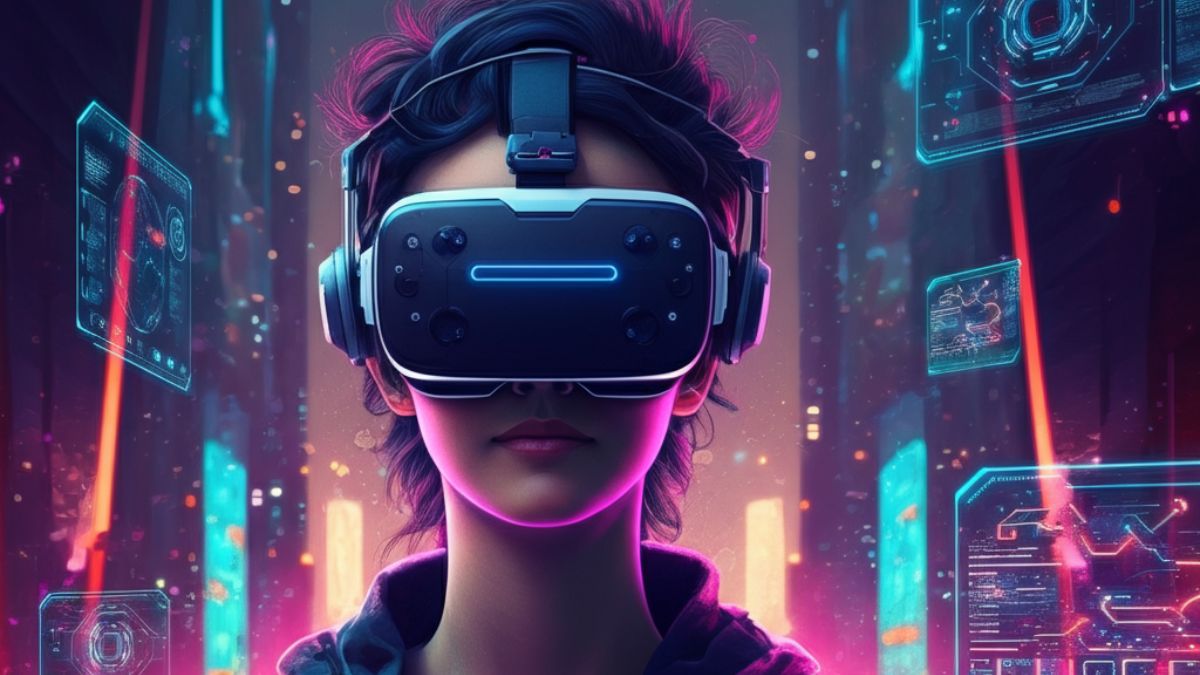
Virtual reality (VR) has transitioned from a futuristic concept to a technology shaping countless industries today. Whether it’s elevating entertainment or revolutionizing healthcare, VR is breaking barriers and redefining what’s possible in the modern world. But what exactly is VR, and how is it impacting the way we live, work, and play?
This blog dives into how virtual reality works, its diverse applications, and why it’s more than just a trend. By the end, you’ll have a clear understanding of VR’s potential to change your daily life and the industries around you.
What is Virtual Reality?
Virtual reality creates immersive, computer-generated environments that simulate real-world experiences or entirely imaginary worlds. By wearing VR headsets and often using hand controllers, users can interact with these environments as if they were physically present.
For example, VR lets a gamer climb mountains in a fantasy world, a surgeon practice life-saving skills in a risk-free environment, or a homebuyer tour properties without leaving their couch. At its core, VR is about fully engaging the senses to blur the line between reality and simulation.
How Virtual Reality Works
VR combines hardware and software to create its signature immersive experiences. The key components include:
- VR Headset – Devices like the Oculus Quest 2 or HTC Vive display visuals that adapt to a user’s head movements.
- Tracking Sensors – Cameras and sensors track user actions, such as walking or hand gestures, allowing interaction with the virtual world.
- Content Platforms – VR apps and games, for both entertainment and professional purposes, power the experiences users engage with.
- Processing Power – Whether through a connected computer, gaming console, or standalone headset, robust processors ensure smooth and lifelike visuals.
By synchronizing these elements, VR offers users real-time interactivity and a high degree of immersion.
Transforming the Way We Work
Virtual reality is shaking up industries by changing how people collaborate, learn, and perform their jobs. Here’s how VR is impacting the workplace:
1. Training and Skill Development
VR provides employees with hands-on training in a risk-free environment. From pilots practicing in flight simulators to assembly workers mastering machinery, VR enables safe and cost-effective skill-building.
For example, UPS uses VR to train delivery drivers to handle challenging conditions on the road. Similarly, healthcare professionals are using VR to simulate surgeries, allowing surgeons to refine their techniques before operating on real patients.
2. Remote Collaboration
With VR, remote communication has gone beyond video calls. Tools like “Spatial” or “Horizon Workrooms” provide virtual meeting rooms where teams can collaborate as if they were in the same office. Picture brainstorming ideas on a virtual whiteboard or presenting to an interactive virtual audience.
This kind of immersive remote work is becoming particularly valuable for global teams who want to stay connected while minimizing travel costs.
3. Product Design and Prototyping
Industries like automotive and architecture are using VR to visualize and test their designs before creating physical prototypes. Designers can walk through a virtual building or examine the fine details of a car, streamlining the production process while saving time and resources.
Revolutionizing Entertainment and Leisure
The entertainment industry is one of VR’s most visible success stories. By providing groundbreaking experiences, VR is creating new ways to play, connect with others, and explore creativity.
1. Gaming
Gaming remains the flagship use case for VR. Titles like Beat Saber and Half-Life: Alyx have captivated audiences with unparalleled interactivity and realism. Unlike traditional games, VR lets players physically move, dodge, and interact with their virtual surroundings, turning gaming into a fully immersive workout.
2. Virtual Travel
Why stick to looking at vacation photos when VR can take you there? Virtual tourism lets users explore iconic destinations like the Eiffel Tower, Angkor Wat, or even distant galaxies—all from their living rooms. Companies like Google Earth VR are helping people fulfill their wanderlust without the expense of international flights or concerns about travel restrictions.
3. Live Events
Can’t make it to a concert or sporting event? VR eliminates the need for seats by offering real-time, 360-degree access to music festivals, football games, and more. Platforms like NextVR allow fans to enjoy front-row experiences from any corner of the world.
Virtual Reality in Healthcare
Beyond entertainment, VR is dramatically transforming how healthcare professionals diagnose, treat, and manage patient care.
1. Therapy and Rehabilitation
VR is now used in therapeutic settings to treat anxiety, PTSD, and phobias. Patients can confront fears in controlled virtual spaces, helping ease their real-world anxiety over time.
For physical rehabilitation, VR encourages movement by transforming exercise into engaging, game-like challenges. Apps like MindMaze are empowering patients to recover from strokes and injuries faster.
2. Pain Management
Some hospitals are using VR to help patients manage acute or chronic pain. By immersing patients in calming virtual environments or engaging activities, VR reduces the brain’s perception of pain—offering an alternative or supplement to traditional painkillers.
3. Medical Training
Medical students and surgeons now use VR to practice procedures in fully immersive conditions. Companies like Osso VR allow users to experience the intricacies of human anatomy or practice complex surgeries before stepping into a real operating room.
Overcoming Challenges in VR Adoption
While virtual reality is rapidly growing, its adoption still faces some hurdles, including:
- Cost: High-quality VR headsets and software can be expensive, making accessibility limited for small businesses or average consumers.
- Hardware Limitations: Some VR devices require cutting-edge computers or external cameras, increasing setup complexity.
- Motion Sickness: Prolonged VR use can cause discomfort or nausea for some users, although advancements in hardware are reducing these effects.
- Content Development: Like any new medium, there’s a learning curve for creating compelling VR experiences that offer long-term value.
Despite these barriers, the industry is seeing improvements, making VR more affordable, accessible, and innovative each year.
The Future of Virtual Reality
The future of VR promises to be even more exciting than its present. With developments like the metaverse—a virtual shared space where people can explore, socialize, and shop—VR is expected to redefine not only industries but also everyday social interactions. Education, for example, could bring virtual classrooms where students can “visit” historical landmarks or conduct experiments in simulated labs.
More advancements in AI and haptics (technology that replicates touch sensations) will enhance VR immersion further. And as costs fall and technology improves, VR may become a standard tool in both professional and personal settings.
Discover the World of VR Today
Whether you’re a business professional looking to tap into VR’s productivity potential or a gamer eager to explore immersive worlds, virtual reality offers endless possibilities. It’s not just a technology of the future—it’s shaping the world today.
Are you ready to step into the VR revolution? Explore the latest VR innovations and find your perfect headset to get started. The future is just one virtual step away!
VR’s Impact on Education and Learning
Virtual reality is redefining education by creating immersive and interactive learning environments. From virtual field trips to historical landmarks to hands-on science experiments in simulated labs, VR is making education more engaging and accessible. Students can explore complex concepts like space exploration or human anatomy in ways traditional methods cannot replicate. For instance, platforms like zSpace and ExpeditionsPro enable educators to craft immersive lessons that captivate learners and deepen their understanding of various subjects.
Additionally, VR makes education more inclusive. Students with disabilities or those in remote areas can participate in virtual classes, ensuring they receive the same quality of education as their peers. With continual advancements in VR technology, learning experiences are becoming more personalized, fostering creativity and critical thinking skills essential in today’s fast-paced world.
From schools to corporate training programs, VR is revolutionizing how knowledge is shared and absorbed, preparing individuals for the challenges of the future.
VR in Corporate Training and Skill Development
Virtual reality is transforming corporate training by offering engaging and effective methods for skill development. Traditional training methods, such as lectures or videos, are being complemented or replaced with interactive VR simulations. By immersing employees in realistic, consequence-free environments, VR enables them to practice skills, refine techniques, and respond to challenging situations without real-world risks.
For instance, companies use VR to train employees in fields like machinery operation, customer service, and emergency response. Platforms like STRIVR and TaleSpin provide tailored VR-based solutions that simulate workplace scenarios, allowing employees to learn through practical, hands-on experiences. This method not only improves knowledge retention but also boosts confidence in applying new skills.
Additionally, VR supports soft skills development, such as public speaking, negotiation, and team collaboration. Simulations can replicate boardrooms, conferences, or even difficult conversations, enabling employees to practice and refine their communication and interpersonal abilities.
The adaptability and scalability of VR make it ideal for large organizations looking to train employees across multiple locations, cutting down on travel costs and ensuring consistency in the learning experience. As businesses continue to innovate, VR is set to become an essential tool for workforce development, paving the way for enhanced productivity and success in a rapidly evolving job market.
TECH
Designing the Perfect Website for Clingr Users

Creating a Digital Home That Engages and Converts
Your website is the digital storefront of your business. For Clingr, a platform designed to bring people closer, having an engaging, user-friendly website is essential to attract and retain users. Whether you’re looking to foster deep friendships or meaningful networks, your website should reflect the values and functionality that Clingr stands for.
This blog will guide you through key principles and strategies for designing the perfect website for Clingr users. From user experience (UX) design to creating visually captivating aesthetics, we’ll explore the elements that contribute to a successful, functional, and conversion-driven website.
Why Website Design Matters
Your website often forms the first impression of your platform. Consider these statistics:
- 75% of users judge a company’s credibility based on its website design.
- If your site takes over 3 seconds to load, 53% of mobile visitors will leave immediately.
For Clingr, a platform that thrives on relationships, a poorly designed website can drive users away before they even sign up! Our goal is to develop a site that embodies your mission of connection and fosters immediate trust.
Guiding Principles for Clingr Website Design
1. Prioritize User-Focused Design
A user-centric design is the backbone of any successful website. For Clingr, you must cater to two types of users:
- The Curious Visitor: Someone exploring your platform for the first time.
- The Active Community Member: Someone already invested in Clingr’s offerings.
Tips to Execute User-Focused Design:
- Intuitive Navigation: Use a clean and straightforward menu that guides users effortlessly. Avoid overwhelming them with too many options.
- Clear Calls-to-Action (CTAs): Buttons like “Sign Up,” “Join Now,” or “Start Connecting” should be prominent and visually appealing. Make users’ next steps feel obvious.
- Personalization: Offer tailored content and suggestions for returning users. For example, recommend groups or communities they might be interested in.
2. Prioritize Speed and Accessibility
Speed and accessibility are essential elements of any modern website. Clingr users expect your website to load fast and be accessible across various devices and browsers.
Best Practices for Speed Optimization:
- Optimize images and graphics for faster load times. Striking imagery is fantastic but shouldn’t compromise speed.
- Minimize JavaScript and CSS files through compression. This reduces file size and enhances site performance.
Accessibility Considerations:
- Ensure compatibility with screen readers.
- Use alt text for all images to cater to visually impaired users.
- Maintain high color contrast to improve readability for all users.
3. Striking the Right Visual Tone
Clingr is all about connection, togetherness, and forming relationships. Your website should embody this ethos visually.
Style and Branding Tips:
- Color Palette: Choose warmer, inviting tones such as blues (trust), greens (growth), and oranges (energy).
- Imagery: Integrate images of people interacting authentically to represent real-world connections.
- Typography: Use modern, clean fonts for readability and professionalism. Ensure consistency across all branding materials.
4. Create Value Through Content
To retain user interest, your website must offer tangible value. Educational content, news updates, and posts from active community members can demonstrate the value of being part of Clingr.
Types of Content to Feature:
- Community Stories: Highlight authentic success stories of individuals or groups who formed meaningful connections via Clingr.
- Expert Blogs: Publish advisory blogs or articles. For example, “How to Build Better Connections Online” or “5 Ways to Build Trust in Digital Communities.”
- FAQs: Address common questions succinctly to help users quickly grasp Clingr’s purpose and functionality.
5. Incorporate Strong Social Proof
Trust is critical in platforms like Clingr, and showcasing user satisfaction is invaluable in building credibility.
How to Feature Social Proof:
- Testimonials: Use real, heartfelt stories from users praising Clingr for its positive impact.
- Statistics (“98% of users said they formed meaningful relationships”): Present credible data points that demonstrate success.
- Media Mentions or Reviews: Have you been praised by notable bloggers or publications? Display those shoutouts prominently.
6. Leverage Artificial Intelligence and Chatbots
Ensure that your visitors always feel guided or assisted, even when you’re offline. AI-integrated chatbots can provide users with real-time answers and help them get started quickly.
Functional Uses of AI for Clingr:
- Welcome new visitors by guiding them to the sign-up process or community spaces.
- Assist with password recovery, account setup, or FAQs.
- Instantly curate personalized suggestions for communities based on users’ specified interests.
Advanced Functionality to Include
Clingr represents modern, dynamic networking. To affirm this, your website needs functionality that exceeds the static web designs of yesteryears.
Key Features to Include:
- Search and Filter Options for easy discovery of communities and events.
- Interactive Features such as user reviews, polls, and surveys to keep users engaged.
- Content Calendar Integration, including reminders for online events or meet-ups.
- Mobile Optimization for perfect performance on tablets and smartphones.
Boost Your Results with Analytics
Building a rapport with your audience doesn’t happen overnight, and measuring success is part of the process. Use analytics tools to determine:
- Which pages users are staying on the longest.
- When and where visitors tend to leave your site.
- Which CTAs are driving sign-ups.
These insights will help you refine your website over time, ensuring its impact continues to grow.
Build Stronger Communities on Clingr
Your website is your most influential tool in showcasing what Clingr stands for and why users should join your platform.
By focusing on user experience, improving accessibility, and incorporating modern web technology, you’ll attract visitors and inspire trust and excitement for your mission.
Whether you’re designing your first site or revamping your current one, always consider your target user base. A well-created digital presence will introduce people to the thoughtful and innovative space you’ve built.
Looking for additional help? Partner with professional designers or developers who can bring your vision to life. For more tips on optimizing community platforms, sign up for our newsletter!
TECH
Understanding the Benefits of Winqizmorzqux Product
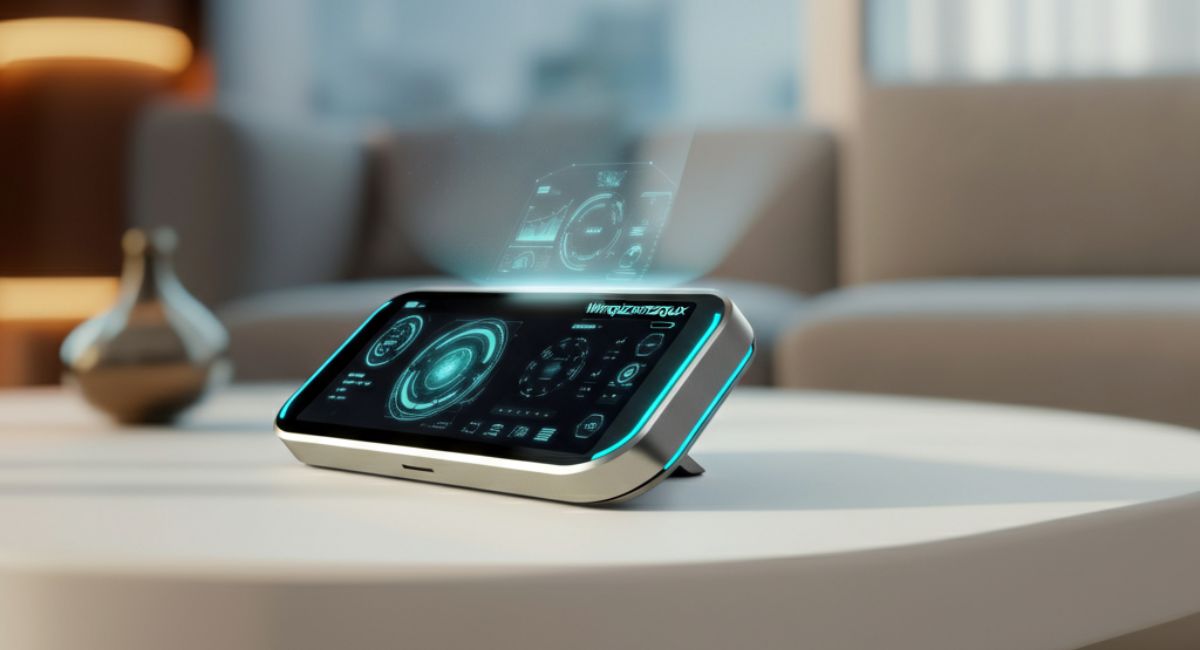
When it comes to innovative solutions that streamline processes and elevate experiences, Winqizmorzqux stands out. This product has been designed to bring ease, efficiency, and enhanced functionality to users, making it an essential tool for those seeking cutting-edge technology. But what makes the Winqizmorzqux product so beneficial? And how can it improve your day-to-day operations or lifestyle?
This blog covers the core benefits of Winqizmorzqux and what you need to know to maximize its value.
What is Winqizmorzqux?
Before we explore its benefits, it’s essential to understand what Winqizmorzqux is. At its core, Winqizmorzqux is a [brief description of the product, e.g., an AI-powered tool, productivity software, or a specialized gadget, depending on the product]. It’s designed to address [specific problem] by [specific solution]. Whether you’re a professional, a business owner, or someone looking to improve efficiency, Winqizmorzqux caters to your needs.
Now, let’s take a closer look at why Winqizmorzqux has become a must-have for its growing user base.
Key Benefits of Using Winqizmorzqux
1. Enhanced Efficiency
One of the standout features of Winqizmorzqux is its ability to boost efficiency. By automating repetitive tasks, reducing manual effort, or providing streamlined workflows, users can save time and focus on what truly matters. For example:
- Businesses can reduce operational bottlenecks.
- Individuals can accomplish more with less effort.
This enhanced efficiency translates to increased productivity, whether you’re incorporating Winqizmorzqux into your professional or personal life.
2. Advanced Functionality Packed Into a User-Friendly Design
Not only is Winqizmorzqux powerful, but it’s also intuitive. You don’t need to be an expert to use it effectively. The product’s [specific feature description, e.g., “adaptive interface” or “smart algorithms”] is designed to make your experience seamless and straightforward:
- Easy onboarding for beginners.
- Advanced settings for power users who need more control.
This balance between innovation and simplicity ensures that users of all skill levels can benefit from Winqizmorzqux.
3. Scalability for Long-Term Growth
Winqizmorzqux adapts to your changing needs, making it an ideal long-term solution. Its flexibility allows it to scale alongside businesses or evolving personal tasks. For businesses, this scalability means you don’t need to invest in new tools as your organization grows. For personal users, it means Winqizmorzqux remains beneficial regardless of how your goals or priorities shift over time.
4. Cost-Effectiveness
While innovation often comes at a price, Winqizmorzqux delivers unmatched value. It consolidates multiple features into one product, eliminating the need to invest in multiple tools or solutions.
- Save money on unnecessary subscriptions or add-ons.
- Maximize the value of a single purchase.
5. Superior Customer Support
What truly sets Winqizmorzqux apart is its dedication to excellence, which extends to its customer support. Winqizmorzqux offers comprehensive resources, from detailed guides to responsive support teams, ensuring that users have everything they need to succeed.
Knowing that help is readily available allows users to integrate Winqizmorzqux into their routines.
6. Contributions to Sustainability
For eco-conscious users, Winqizmorzqux reinforces its value with [specific environmentally friendly feature, e.g., energy efficiency or sustainable materials]. Its impact goes beyond functionality; it aligns with modern values that prioritize sustainability.
This makes Winqizmorzqux not just a tool but a responsible choice for the environment.
How Does Winqizmorzqux Work?
Understanding how Winqizmorzqux Product works can help you unlock its full potential. Here’s a quick breakdown:
- Setup – Begin with a simple setup process. Within minutes, Winqizmorzqux is ready to use.
- Customization – Tailor it to meet your specific needs with easy customizations.
- Actionable Insights – Leverage its advanced analytics and real-time feedback to improve outcomes.
Whether used individually or in complex systems, Winqizmorzqux provides significant value at every step.
Who Will Benefit the Most From Winqizmorzqux?
Winqizmorzqux is designed for wide-ranging applications, making it beneficial for:
- Business Owners looking for tools to save costs and simplify workflows.
- Teams searching for collaborative solutions with innovative features.
- Tech Enthusiasts who want to stay ahead with advanced tools.
- Everyday Users aiming to make better use of their time and resources.
How Can You Get Started With Winqizmorzqux?
Getting started with Winqizmorzqux is quick and hassle-free:
- Visit [link to website or store] to learn more.
- Choose the ideal subscription, plan, or configuration for you.
- Enjoy the benefits immediately, supported by onboarding tools and guides.
Whether you’re ready to make a purchase or simply exploring how Winqizmorzqux fits into your needs, [specific actionable next step, e.g., free trial or demo] is available to make your decision easier.
Why Winqizmorzqux is a Game-Changer
Winqizmorzqux represents more than a product; it’s a solution that redefines how users approach [problem or challenge]. It continually proves its worth by enabling efficiency, encouraging innovation, and delivering measurable value. Its [specific standout feature, e.g., design, flexibility, or adaptability] provides a unique combination of unmatched benefits.
Users who integrate Winqizmorzqux into their routines often report [specific user outcome or experience, e.g., reduced workload, better focus, or improved outcomes].
Why Wait? Try Winqizmorzqux Today!
Discover firsthand why Winqizmorzqux Product has become the go-to tool for [the specific audience group mentioned earlier]. Its benefits span efficiency, sustainability, cost-effectiveness, and more. Take the first step by exploring Winqizmorzqux for yourself and seeing the difference it makes.
TECH
The Ultimate Guide to Virtual Reality Headsets: What You Need to Know
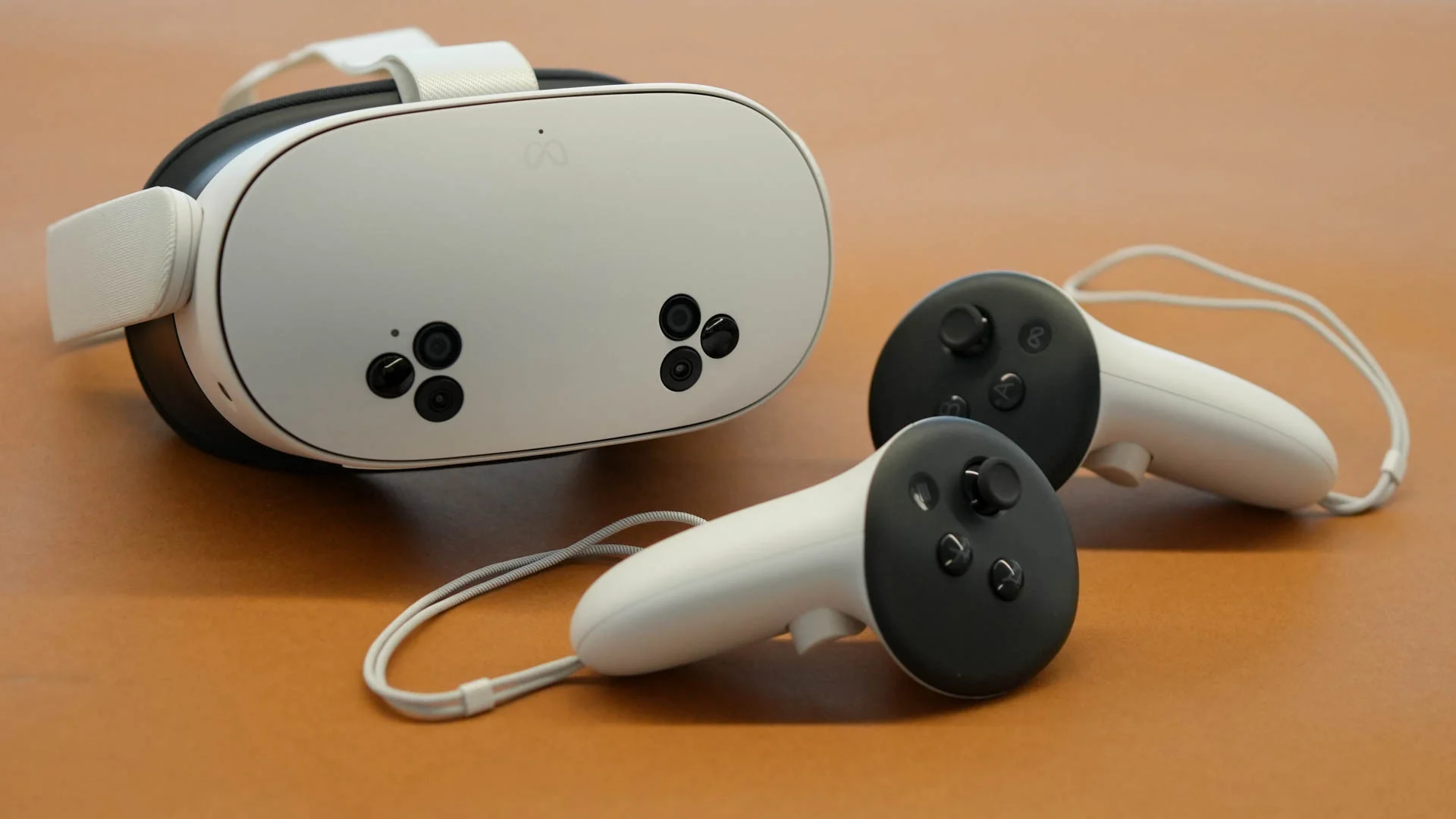
Virtual reality headsets have emerged as game-changing devices, altering the way we interact with technology, media, and even one another. But with so many options on the market and constant advancements in VR technology, it can feel overwhelming to choose the right one or even understand what sets each apart.
This guide breaks down everything you need to know about virtual reality headsets—from the features that matter most to their potential applications in entertainment, education, and beyond. Whether you’re a first-time buyer or a seasoned tech enthusiast, you’ll come away with the clarity to make the right decision.
What Is a Virtual Reality Headset?
A virtual reality headset is a device that either completely immerses you in a digital world or augments the physical world around you. It uses high-tech displays, sensors, and software to simulate lifelike experiences, whether you’re playing a game, attending a virtual event, or exploring a 3D-rendered environment.
Most VR headsets feature key components like motion tracking, controllers, and built-in audio systems. These elements combine to create a seamless and interactive experience that makes you feel like you’re truly “inside” the simulated environment.
Types of Virtual Reality Headsets
Not all VR headsets are created equal. Understanding the different types can help narrow down your options based on your needs and intended use.
1. Standalone VR Headsets
Standalone VR headsets, such as the Meta Quest 2, are self-contained units. They don’t require external devices like PCs or consoles to operate. These are ideal for casual users who want a convenient, plug-and-play experience.
Key Features:
- Wireless design
- Onboard storage and processing
- Easy setup
Best For:
Casual gaming, fitness apps, and social VR platforms.
2. PC-Connected VR Headsets
PC-connected headsets, like the Valve Index or HTC Vive Pro, offer cutting-edge graphics and performance. However, they need a high-powered computer to function and are generally more complex to set up.
Key Features:
- Ultra-high-definition graphics
- Wide range of advanced apps
- Precision motion tracking
Best For:
Hardcore gamers, developers, and enterprise-level applications.
3. Console-Tethered Headsets
These headsets plug into gaming consoles like the PlayStation. A popular example is the PlayStation VR2. They are tailored for dedicated gamers but lack the technical versatility of PC-connected models.
Key Features:
- Console compatibility
- Rich game libraries
Best For:
Console gamers who want to expand their gaming experience into VR.
4. Mobile VR Headsets
Mobile VR headsets, such as Samsung Gear VR, are no longer as popular but were an entry point to VR. They used a smartphone as both the display and processing power.
Key Features:
- Accessible and affordable
- Limited performance
Best For:
Light VR experiences for beginners (although largely discontinued).
Features to Look for in a VR Headset
The right VR headset for you will depend on your needs. Here are the key features to consider when shopping for one.
1. Display Quality
Resolution plays a significant role in the overall VR experience. Higher resolution means crisper visuals, which directly impacts immersion. Look for a display resolution of at least 2160 x 2160 per eye for a sharp image.
Also, pay attention to the refresh rate. A higher refresh rate (90Hz or above) ensures smooth visuals, reducing motion sickness.
2. Comfort and Fit
VR sessions can last for hours, so comfort is key. The headset’s weight, strap adjustability, and cushioning should be top priorities. Some high-end headsets offer custom sizing for added convenience.
3. Field of View (FOV)
The field of view determines how much of the digital world you can see at one time. Wider FOVs (typically 100° or above) enhance immersion, making your experience feel less like looking through a pair of binoculars.
4. Motion Tracking and Controllers
Accurate motion tracking allows users to interact with virtual environments seamlessly. Headsets typically use either inside-out tracking or external sensors to monitor movement.
Pair this with intuitive controllers that feature responsive buttons, and you’ll feel completely in control of the virtual space.
5. App Ecosystem
A strong app library ensures you have a wide range of games, experiences, and even productivity tools to explore. Platforms like SteamVR, Oculus Store, and PlayStation Store offer extensive libraries tailored to specific VR headsets.
6. Price Point
VR headsets can range from budget-friendly models under $300 to premium devices costing upwards of $1,000. Your budget will likely determine what features you prioritize. Set a realistic budget and understand the trade-offs you may face.
Uses of Virtual Reality Headsets
VR headsets aren’t just for gamers. Their applications extend across various industries, offering both entertainment and utility benefits.
1. Gaming and Entertainment
Gaming represents the most mainstream application for VR. Platforms like SteamVR and PlayStation VR offer immersive games that push the boundaries of storytelling, interactivity, and design.
Beyond gaming, VR headsets are turning into portable theaters. Platforms like Netflix VR allow users to enjoy movies and shows in a virtual cinema setting.
2. Education and Training
Virtual reality headsets is transforming education by introducing immersive learning experiences. Science students can explore 3D models of human anatomy, and history buffs can virtually “walk” through ancient cities.
Similarly, workplaces use VR for training simulations spanning everything from medical surgeries to engineering tasks. This approach improves learning retention while lowering costs.
3. Fitness and Wellness
VR fitness apps like Supernatural or FitXR help users stay active in exciting ways, merging workouts with gamification. Meditative programs like TRIPP focus on mental wellness, offering immersive environments for relaxation.
4. Design and Creativity
VR tools like Tilt Brush and Gravity Sketch unlock creative potential, allowing artists and designers to create 3D sculptures, blueprints, and models. Many architects and product designers use VR to test prototypes before manufacturing begins.
5. Professional Collaboration
Remote work is more engaging in VR. Tools like Spatial and AltspaceVR allow professionals from around the globe to collaborate in shared virtual office spaces, fostering more connected teams.
The Best VR Headsets on the Market Right Now
If you’re ready to take the plunge, here are the top-rated VR headsets worth considering in 2024.
- Meta Quest 2 (Budget-friendly, standalone, versatile)
- Valve Index (Premium PC-connectivity, advanced controllers)
- PlayStation VR2 (Console integration, exceptional game catalog)
- Pico 4 (Strong performance for standalone users)
Each of these delivers great value in specific areas, catering to different user needs and preferences.
Preparing for a Virtual Future
Virtual reality headsets is no longer reserved for tech aficionados—it’s rapidly becoming a necessity in both entertainment and business. Picking the right VR headset boils down to understanding your priorities, whether it’s immersive gaming, professional use, or exploring revolutionary learning tools.
No matter your reason for stepping into the virtual world, VR technology offers endless possibilities to explore. If you’re still unsure which headset suits you, focus on compatibility with your intended use and start with an option that fits your budget.
The future of tech is truly virtual—and with the right headset, you’re just a step away from experiencing it!
FAQs
1. What is the best VR headset for beginners?
For beginners, standalone headsets such as the Meta Quest 3 or Pico 4 are ideal. They don’t require a powerful PC or console to operate, making them more accessible and easy to set up.
2. Can VR headsets be used for work purposes?
Yes, many VR headsets are designed for professional use. They enable virtual meetings, collaboration, and even advanced training simulations. Devices like the Meta Quest Pro are tailored for business and productivity.
3. Are VR headsets safe to use?
When used responsibly, VR headsets are safe. However, users should take breaks to prevent eye strain and maintain spatial awareness to avoid physical accidents.
4. What accessories can enhance the VR experience?
Accessories like motion controllers, haptic gloves, charging docks, and face pads can enhance comfort and immersion. Consider investing in accessories that align with your specific VR activities.
5. Do I need a high-end PC for VR?
Not necessarily. While some VR devices like the Valve Index require a powerful PC, standalone headsets such as the Meta Quest 3 operate independently, eliminating the need for additional hardware.
6. How much should I spend on a VR headset?
Budget depends on your priorities and use case. Entry-level models typically start around $300, whereas high-end options for gaming or work can range between $600 to $1,000+. Evaluate your needs before committing to a price point.
-
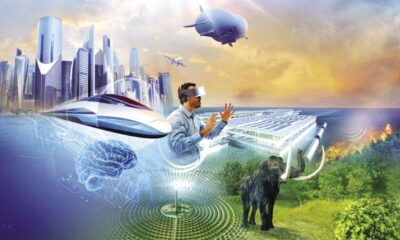
 TECH10 months ago
TECH10 months agoExploring Precision Technologies International: The Future of Advanced Engineering
-

 TECH10 months ago
TECH10 months agoStevens Institute of Technology: Pioneering Innovation and Excellence in Education
-

 NEWS9 months ago
NEWS9 months agoThe NYT’s Take on British Affairs: A Comprehensive Review
-

 FINANCE8 months ago
FINANCE8 months agoInvestiit.com Tips: Maximizing Your Investment Success
-
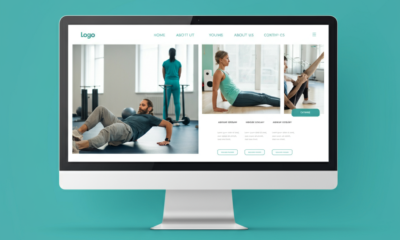
 HEALTH9 months ago
HEALTH9 months agoThe Ultimate Guide to Physical Therapy Web Design That Converts
-

 NEWS3 months ago
NEWS3 months agoTop 5 Reasons to Follow UKOBIW.com for Your Daily News Fix
-

 HEALTH9 months ago
HEALTH9 months agoThe Allure of Candy Red: A Bold Hue That Never Goes Out of Style
-

 CROSSWORD & PUZZLES6 months ago
CROSSWORD & PUZZLES6 months agoVault Opener NYT Crossword: An Informative Guide
